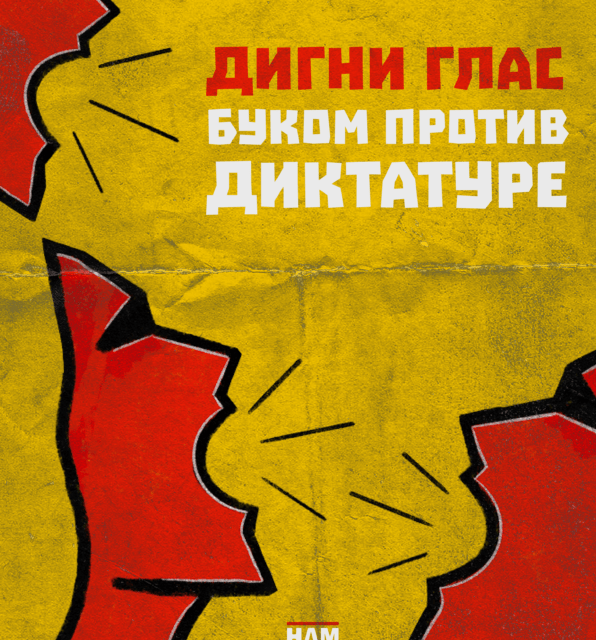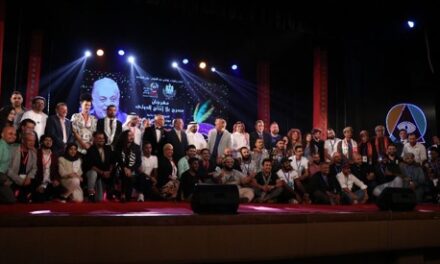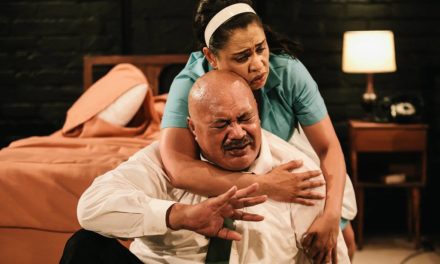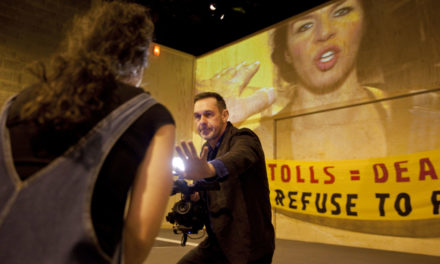How did diverse balcony performances emerge in Serbia during the coronavirus epidemic and how did they become a metaphor for a polarized society?
Since the beginning of the coronavirus epidemic in Serbia in mid-March, the country found itself – quite like many others – in a state of emergency with closures of all non-essential businesses and restricted travel. However, unlike many others, its citizens faced a curfew which spans varied from week to week, but a record 84 hour or three and a half-day lockdown was imposed during the Orthodox Easter holidays around April 19. And this is not to mention an all-day curfew for people of age 65 or older, that have just recently, at the end of April, received permission for short walks around their homes.
Looking back at mid-March, Serbian citizens faced an uncertain future and grim pictures coming from the rest of Europe, also knowing that their impoverished healthcare system would collapse if confronted with a bigger number of coronavirus infections. As in other countries, medical workers started operating on a risky frontline, sometimes working without necessary protective gear and consequently carrying themselves a big percentage of disease cases.
Stuck at their homes in a gloomy reality, citizens began spreading an initiative on social media for applause for medical workers, to be held every evening at 8 pm. The call was quite successful – a humming and powerful applause was heard across several large cities on March 18. The videos of the event quickly circulated through news and social media, leading to even bigger applause that took place almost in every major city the next day. Shouts were heard, cries of encouragement, whistling… People gave their symbolic support from the bottom of their hearts.
Blok 44 me najezio!!! Aplauz za medicinsko osoblje Srbije!
Posted by Maya Nikolich on Wednesday, March 18, 2020
Because all theatres and performing arts venues had been closed since the beginning of March, these clapping practices remained, in a sense, the only actual performances in the country. There were a lot of filmed shows online – the majority of theatres presented their works on youtube or websites – but if we examine the situation from an angle of theatre and performance studies, we’ll see that “online performances” are just videos, not the shows themselves. For example, Erika Fischer-Lichte, a highly respected German theatre scholar, explains in her Routledge Introduction to Theatre and Performance Studies that video recordings of performances are just historiographic documents of performing artworks. Thus, the evening claps were our only connection to performing practices.
As the claps continued the following weeks, Serbia managed to keep the epidemic under control, thanks to many historical experiences in states of emergencies like wars, bombarding, and international sanctions. But another problem emerged – the accelerated rise of authoritarianism. Serbian President Aleksandar Vučić – a former far-right nationalist and a member of Slobodan Milošević’s notorious government in the 1990’s – and his ruling Serbian Progressive Party (SNS) took the chance to consolidate more power in many ways.
Marjana Majstorović, an attorney at law with private solo practice from Belgrade, said that the state of emergency was introduced on March 15 “in an unconstitutional manner by the President of the Republic, the Speaker of the National Assembly and the Prime Minister who are all members of the same ruling SNS party, instead of a simple majority of votes of Members of National Assembly. Thus, the totalitarian dictatorship was formally introduced. During the state of emergency, all decisions were made by Aleksandar Vučić and his closest party associates in the highest state positions.”
The dictatorship wasn’t just formal, though. Several people who breached the curfew were beaten by the police – videos of these cases spread through social media and independent news. Online trials for those who violated the lockdown were held in a rushed manner and without a proper defense. Ana Lalić, a journalist of the news portal Nova.rs, was arrested on April 1st on charges of causing panic for reporting on shortages of supplies and difficult working conditions in the Clinical Center of Vojvodina in Novi Sad, although her claims were later proven true. Even when the highest state officials released her because of the uproar of the public, they verbally attacked her, naming her a liar several times.
Among many other miscarriages of the government is an insufficient rescue package for the economy. “Economic measures did not cover all vulnerable sections of society, especially independent artists and workers outside employment,” Marjana Majstorović noted. Many arts and cultural organizations appealed to authorities requesting urgent support for cultural workers, but their call was semi-successful[1]. Moreover, the City of Belgrade, the capital of Serbia, announced that a public competition for artistic and research projects in the field of culture will not be implemented this year. All this highly endangers freelancers and the independent cultural field.
In this hardship, another public performance occurred, this time initiated by Don’t Let Belgrade D(r)own, a local political organization gathering people interested in improving the living and working conditions of citizens. Noise against Dictatorship, the performance was named. It was conceptualized as a balcony and window protest at 8:05 pm – just after the applause for medical staff – with people expressing their dissatisfaction with the government by creating loud noise in any possible way.
The protest was launched on April 26 when I – disoriented in time because of the quarantine – was completely startled hearing a racket outside my apartment in Novi Sad, the capital of the autonomous province of Vojvodina. I ran out on my balcony and heard a cacophony of – whistling, banging pots, and spoons, loud music, yelling, etc. I went back inside for a moment, bringing a whistle to the balcony and blew as hard as I could to join others. The protest gained even more followers the next day, spreading to more than 30 cities.
Ovo je samo delić atmosfere od sinoć!
Snimite buku koju proizvodite, napišite ime grada ili dela grada gde ste snimili i pošaljite je na fejsbuk grupu Bukom protiv diktature: https://t.co/1U4L2fYmxX
Hvala Filipu Orlandiću za video#DigniGLAS #BukomProtivDiktature pic.twitter.com/ySjQoTXbLQ
— Ne davimo Beograd (@nedavimobgd) April 27, 2020
Vjekoslav Vuković, an activist from Don’t Let Belgrade D(r)own, said that the reasons for starting these political performances were many, but among them: “Strong repressive measures we are exposed to and abuse of our necessary confinement in homes to slow the spread of the disease, by the President and the ruling party who are in a constant election campaign, instead of giving useful information to citizens.”
He also added: “Noise is only one way of rebellion, but now we all hear each other, know that we are there and that we will be even louder and more solidary on every next opportunity to make our society a decent place for living, where workers are adequately paid, medical institutions are at service for everyone, the state takes care of poor citizens and those who have been left homeless, and crime, which is an integral part of the state, expelled from the government authorities.”
Marjana Majstorović also participated in the protests and her reasons were similar to Vjekoslav’s. “I personally participate with a whistle. This same whistle I used in 1996 during protests against the Milošević regime. This protest is a rebellion against the imposed totalitarian dictatorship, collapsed institutions, draconian measures toward citizens, and criminal acts by politicians in top positions in power. They are also a part of civil protests that have been happening, with some pauses, since the last elections held in 2016, and which, in the opinion of one part of the public, were irregular.”
But the balcony performances soon became politically diverse. As a reaction to Noise against Dictatorship, Vladimir Đukanović, a member of the ruling party and the National Assembly, initiated and organized counter-protests in support to President Vučić. These protests first happened on April 29 at 8:30 pm in Belgrade, Novi Sad, and Niš, the three largest cities. Citizens suddenly had a repertoire of three different performances per day: one at 8 pm – apolitical support for medical staff; second at 8:05 pm – an anti-government protest; and third at 8:30 pm – support for the government. The evening hours became a metaphor for the polarized society.
Counter-protests also became a metaphor for the ruling Serbian Progressive Party and the way it operates. Reporters agree that the response of citizens for the 8:30 event wasn’t big, but it was well organized. These performances should be called more accurately “roof performances,” since the participants gathered in small masses on top of the buildings, attracting attention by yelling insults to the opposition and lighting fireworks and torches, which almost started a fire in one building in Niš. As noted by multiple reporters, the pro-government supporters were breaching the evening curfew, since none of them lived in buildings where the events were held, and the police turned a blind eye on the fact, also allowing them to enter someone else’s buildings without permits. Some journalists reported that these protesters were football fans and troublemakers who have connections both with underworld crime circles and the ruling party.
Vjekoslav Vuković said that the state abused mandatory stay-at-home orders by engaging young people in the pro-government protests while breaking the law, all to frighten citizens who were revolting at 8:05 pm. “But people are also opposing that, so they no longer allow anyone to abuse the roofs of buildings where they live,” he noted. And truly, some tenants prevented such actions by performing “Noise against Dictatorship” on entries of their buildings to stop non-residents from entering.
At the beginning of May, tensions calmed down with pro-government protests disappearing, though clapping performances and Noise against Dictatorship continued. The state of emergency ended on May 7 along with most restrictions, including the curfew, but physical distancing measures have remained. As for the epidemic, Serbia managed to keep the first wave under control. Until May 6, a little less than 10 000 cases of COVID-19 were recorded, with 203 deaths from the disease – a relatively good accomplishment that some contribute to restrictions and others to the self-discipline of citizens who are used to different states of emergencies.
Many countries in the world had various balcony performances – from Italy’s musical performances to France’s pot-banging protests on Labor Day and applauses for medical workers all over the world. But balcony (and roof) performances in Serbia seem to be the most developed from a dramaturgical point of view. In their occurrence, they had characters, conflict, resolution, even a rudimentary three-act structure. What more would you want from a simple performance? Most importantly, they reflected political and social divisions in Serbian society, also noting that the coronavirus epidemic is far from the only threat to our lives. The epidemic may have accelerated the rise of authoritarianism, but it’s certainly not the cause of it.
[1] The government agreed to pay independent artists a minimum wage for 3 months (the same decision had applied to full-time workers earlier). This resolution came on May 7, more than 5 weeks after the first rescue package had been introduced. But even this measure applies only to independent artists registered at an artistic association.
This post was written by the author in their personal capacity.The opinions expressed in this article are the author’s own and do not reflect the view of The Theatre Times, their staff or collaborators.
This post was written by Borisav Matić.
The views expressed here belong to the author and do not necessarily reflect our views and opinions.


















